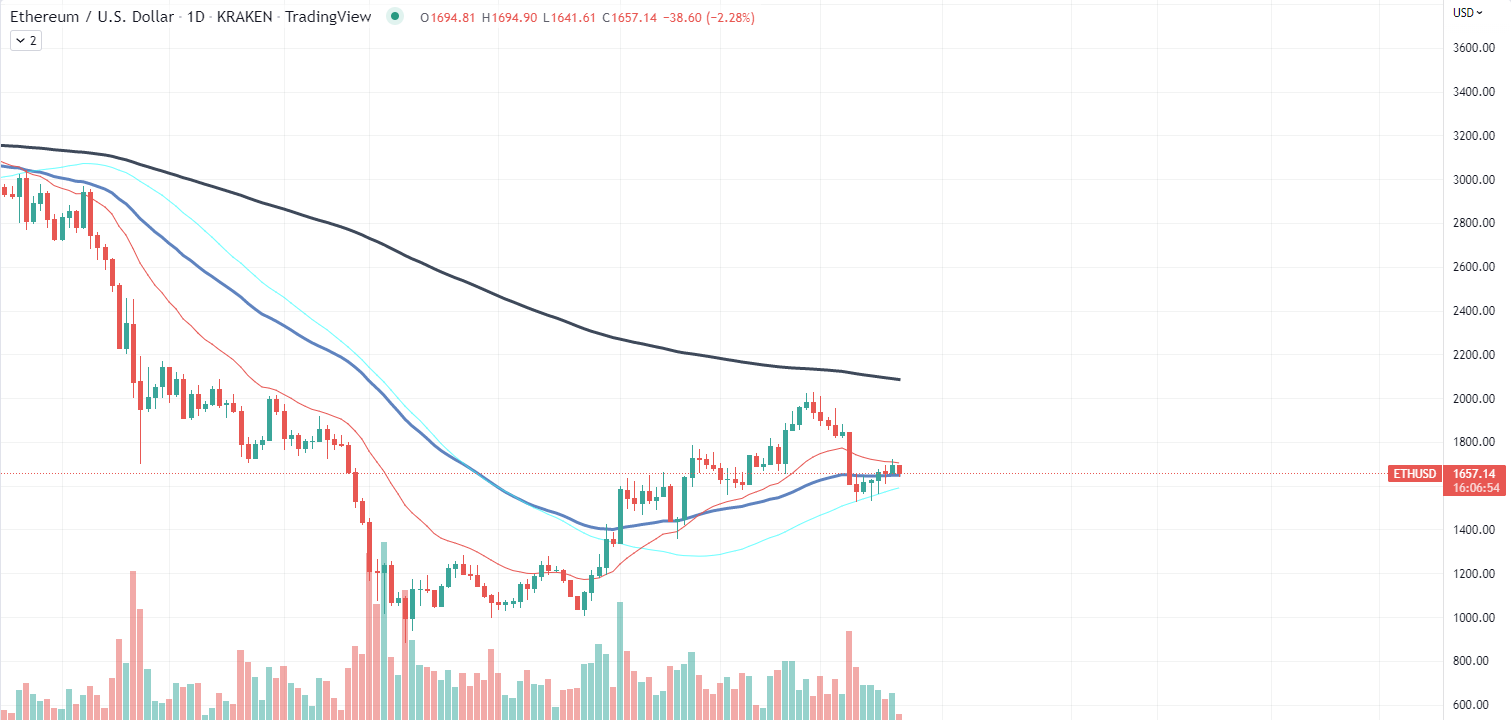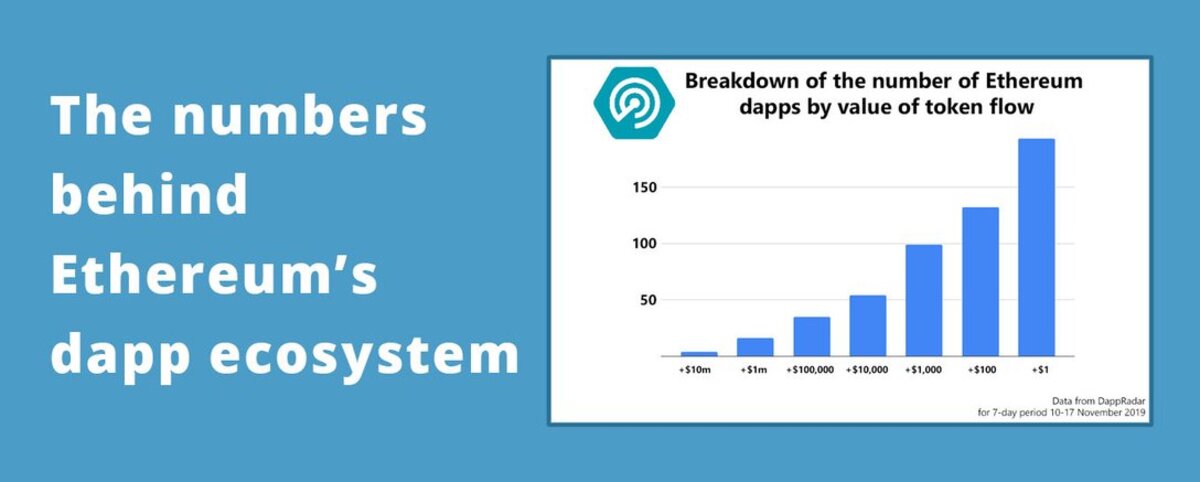Introduction
Ethereum, one of the leading cryptocurrencies and blockchain platforms, has gained tremendous popularity and recognition in recent years. As a decentralized open-source platform, Ethereum enables the development and execution of smart contracts and decentralized applications (DApps). With its unique features and potential for innovation, Ethereum has attracted a significant user base, contributing to its growing influence in the world of digital finance and technology.
In this article, we will explore the realm of Ethereum users – who they are, how many of them exist, and what factors influence their numbers. Understanding the user base of Ethereum is crucial for evaluating the platform’s strengths, identifying opportunities for growth, and assessing its impact on the broader cryptocurrency ecosystem.
By examining the adoption of Ethereum by both individuals and businesses, as well as regional variations in user demographics, we can gain valuable insights into the current state and future trajectory of the Ethereum network.
However, it is important to note that measuring the exact number of Ethereum users can be challenging due to the decentralized nature of the platform and the anonymous nature of many cryptocurrency transactions. Nevertheless, by considering various data sources and analyzing market trends, we can establish a reasonable estimate for the number of individuals and organizations using Ethereum.
In the following sections, we will dive deeper into the fascinating world of Ethereum users, exploring the factors shaping their numbers, adoption patterns, and the challenges associated with measuring their precise count. Let’s embark on this exploration to gain a comprehensive understanding of the Ethereum community and its impact on the digital landscape.
What is Ethereum?
Ethereum is a decentralized blockchain platform that provides a foundation for building and executing smart contracts and decentralized applications (DApps). It was proposed by Vitalik Buterin in late 2013 and launched in 2015, offering a more advanced and versatile solution compared to Bitcoin’s primary focus on peer-to-peer transactions.
Unlike traditional centralized systems, Ethereum operates on a distributed network of computers, known as nodes, that collectively maintain and verify the integrity of the blockchain. The blockchain acts as a transparent and immutable ledger, recording all transactions and smart contract executions in a chronological order.
Smart contracts, a key element of Ethereum, are self-executing agreements that automatically execute predefined instructions once specific conditions are met. These contracts eliminate the need for intermediaries, providing a more efficient and secure way to facilitate various transactions and agreements.
Moreover, Ethereum allows the development of decentralized applications, commonly referred to as DApps. DApps leverage the power of smart contracts to create a wide range of innovative solutions in industries such as finance, supply chain management, gaming, and more. These applications have the potential to disrupt traditional centralized systems and revolutionize various sectors.
Ethereum also introduced its native cryptocurrency, called Ether (ETH), which serves as the fuel for the network. Ether is used to compensate network participants for their computational power and to facilitate transactions within the platform.
One of Ethereum’s notable features is its ability to support the creation of new cryptocurrencies and tokens through the use of its ERC-20 and ERC-721 standards. This has led to the development of a vast ecosystem of digital assets, enabling projects to raise funds through Initial Coin Offerings (ICOs) and provide utility tokens within their respective applications.
Overall, Ethereum offers a versatile and flexible platform that fosters innovation and enables developers to build decentralized applications and smart contracts. Its impact extends far beyond just being a digital currency, as Ethereum aims to decentralize and democratize various industries, revolutionizing the way we interact and transact in the digital age.
How Many Ethereum Users are There?
Measuring the precise number of Ethereum users can be challenging due to the decentralized nature of the platform and the anonymous nature of many cryptocurrency transactions. However, various sources and methodologies can provide insights into estimating the number of individuals and organizations using Ethereum.
One way to gauge the number of Ethereum users is by examining the number of unique addresses interacting with the network. Ethereum addresses are like digital wallets that users can use to send, receive, and store Ether and other tokens. While this approach provides an estimate, it does not necessarily equate to the exact number of individual users as users can have multiple addresses.
Another approach is to study the on-chain activity on the Ethereum network. By analyzing the number of transactions and interactions with smart contracts, we can gain an understanding of the network’s level of usage. However, it’s important to note that this data does not directly translate to the number of unique users, as one user can perform multiple transactions and interactions.
Blockchain analytics companies often employ clustering techniques to classify addresses and understand the number of unique entities using Ethereum. By analyzing patterns such as transaction flows and network connections, these companies can estimate the number of entities or users based on the available data.
Estimations of Ethereum users can also be derived from user surveys and market research. By conducting surveys among the Ethereum community or analyzing data from cryptocurrency exchanges, wallet providers, and DApp usage, researchers can gather insights into the number of users and their demographics.
While it is difficult to provide an exact figure, estimates suggest that there are millions of Ethereum users worldwide. As of August 2021, the number of Ethereum addresses holding any amount of Ether surpassed 162 million. This indicates a substantial user base, encompassing individuals, businesses, and organizations involved in the Ethereum ecosystem.
It’s worth noting that the number of Ethereum users is not static and continues to evolve as the adoption of blockchain technology grows. Factors such as market trends, regulatory developments, and technological advancements can impact the growth and engagement of Ethereum users.
In the following sections, we will explore the various factors influencing the number of Ethereum users, including adoption by individuals and businesses, regional differences, and the challenges in accurately measuring user count.
Factors Influencing the Number of Ethereum Users
The number of Ethereum users is influenced by various factors that shape the adoption and engagement with the platform. Understanding these factors is crucial for evaluating the growth and impact of Ethereum within the larger cryptocurrency ecosystem. Here, we delve into some key drivers that influence the number of Ethereum users.
1. Awareness and Education: Knowledge and awareness of Ethereum among the general population play a vital role in attracting new users. The availability of educational resources and the promotion of Ethereum’s benefits and use cases contribute to increasing user adoption.
2. Technological Advancements: The continuous development and improvement of the Ethereum platform and its underlying technology attract users who are attracted to the advantages offered by smart contracts and decentralized applications.
3. Scaling and Network Capacity: The ability of the Ethereum network to handle a growing number of users and transactions greatly influences its usability and attractiveness. Efforts to enhance scalability through upgrades like Ethereum 2.0 are critical for accommodating increasing user demands.
4. Security and Trust: The security and robustness of the Ethereum network are essential for gaining and maintaining user trust. High-profile security breaches and vulnerabilities can adversely affect user confidence, which may impact the number of users engaging with the platform.
5. Utility and Applications: The availability and quality of decentralized applications (DApps) built on Ethereum significantly contribute to user adoption. Innovative and useful DApps that solve real-world problems attract both individuals and businesses to utilize the Ethereum platform.
6. Developer Community: The size and activity of the Ethereum developer community help drive the growth and adoption of the platform. Developers actively building and contributing to the Ethereum ecosystem create a positive feedback loop, attracting more users and fostering innovation.
7. Regulatory Environment: The regulatory landscape surrounding cryptocurrencies and blockchain technology can influence the number of users. Clear and favorable regulations promote trust and confidence in the platform, encouraging more individuals and businesses to embrace Ethereum.
8. Market and Economic Factors: Market conditions, including price volatility, investor sentiment, and economic factors, can impact user adoption. Bullish market trends often drive increased interest and engagement with Ethereum, while bearish conditions may have a temporary impact on user activity.
9. Accessibility and User Experience: The ease of access and intuitive user experience provided by wallets, exchanges, and other Ethereum-related services are crucial for attracting and retaining users. User-friendly interfaces and intuitive processes can simplify onboarding and encourage wider adoption.
By considering these factors collectively, we can better understand the dynamics that influence the number of Ethereum users. Their interplay and evolution contribute to shaping the future growth and impact of Ethereum on the global stage.
Adoption by Individuals
The adoption of Ethereum by individuals plays a crucial role in determining the number of users and the overall success of the platform. Here, we explore the various factors that influence individual adoption of Ethereum.
1. Investment Opportunities: Many individuals are attracted to Ethereum as an investment opportunity. The potential for price appreciation and the growth of the cryptocurrency market incentivize individuals to acquire and hold Ether (ETH), contributing to the number of Ethereum users.
2. Decentralized Finance (DeFi) Applications: DeFi applications built on Ethereum have gained significant popularity in recent years. These applications offer individuals access to financial services such as lending, borrowing, and earning interest on digital assets. The increasing adoption of DeFi drives individual engagement with Ethereum.
3. NFTs and Digital Collectibles: Non-fungible tokens (NFTs) have also contributed to the adoption of Ethereum. NFTs represent unique digital assets such as artwork, virtual real estate, and in-game items. The ability to buy, sell, and trade NFTs on Ethereum has attracted individuals interested in digital collectibles.
4. Technological Enthusiasts: Individuals with a strong interest in new technologies and the potential of blockchain are often early adopters of Ethereum. These tech-savvy individuals recognize the value of smart contracts and decentralized applications, contributing to the growth of the Ethereum user base.
5. Developers and Innovators: Ethereum’s developer community is instrumental in driving adoption. Developers building innovative DApps on the Ethereum platform attract attention and engagement from individuals who are interested in exploring and utilizing these applications.
6. Remittance and Cross-Border Transactions: Ethereum enables fast and cost-effective cross-border transactions, making it attractive for individuals who require efficient remittance services. The ability to send and receive funds without relying on traditional financial intermediaries appeals to users seeking improved financial inclusivity.
7. Privacy and Security: The pseudonymous nature of Ethereum transactions and the security provided by blockchain technology appeal to individuals who prioritize privacy and data protection. These individuals recognize the potential advantages of decentralized systems over centralized alternatives.
8. Social and Community Influence: Peer recommendations and positive community engagement also play a role in individual adoption. Word-of-mouth referrals, social media influencers, and active online communities contribute to awareness and drive individuals to join the Ethereum ecosystem.
Overall, the adoption of Ethereum by individuals is influenced by a combination of investment opportunities, technological innovation, personal preferences, and community influence. These factors contribute to the growth of the user base as more individuals recognize and embrace the potential of Ethereum’s decentralized network.
Adoption by Businesses and Organizations
The adoption of Ethereum by businesses and organizations is a significant driver in expanding the Ethereum user base and showcasing the platform’s utility and potential across various industries. In this section, we explore the factors that influence the adoption of Ethereum by businesses and organizations.
1. Smart Contracts for Efficiency: Ethereum’s smart contract capabilities offer businesses and organizations the opportunity to automate processes and eliminate intermediaries, leading to increased operational efficiency. By leveraging smart contracts, companies can streamline workflows, reduce costs, and enhance transparency in areas such as supply chain management, legal agreements, and financial transactions.
2. Decentralized Applications (DApps): The availability of decentralized applications built on Ethereum attracts businesses and organizations seeking innovative solutions for their specific industry needs. These DApps provide a range of functionalities, including decentralized finance (DeFi), decentralized identity, supply chain tracking, and more. The potential benefits offered by DApps drive adoption by businesses interested in exploring the possibilities of blockchain technology.
3. Fundraising and Tokenization: Ethereum’s ERC-20 and ERC-721 standards enable businesses and organizations to launch token sales and fundraising campaigns through Initial Coin Offerings (ICOs) or Security Token Offerings (STOs). This presents an alternative to traditional fundraising channels, empowering projects to raise capital and engage with a wider pool of potential investors.
4. Interoperability and Collaboration: Ethereum’s compatibility with other blockchain networks and protocols through technologies like cross-chain bridges promotes interoperability and collaboration among businesses and organizations. This enables data and asset transfer between different networks, fostering the development of integrated solutions and partnerships.
5. Enhanced Data Security and Privacy: The decentralized nature and cryptographic features of Ethereum provide enhanced security and privacy for businesses and organizations. By utilizing blockchain technology, sensitive data can be secured and verified through consensus mechanisms, reducing the risk of data breaches and fraud.
6. Global Market Access and Payment Opportunities: Businesses can leverage Ethereum’s global accessibility to expand their market reach and explore new payment options. With Ethereum, organizations can efficiently facilitate cross-border transactions and bypass traditional financial intermediaries, reducing costs and increasing the speed of transactions.
7. Regulatory Compliance: Ethereum’s transparent and auditable nature can assist businesses in meeting regulatory compliance requirements. The immutability of the blockchain provides a tamper-proof record of transactions, making it easier to demonstrate compliance with regulations related to financial reporting, data privacy, and audit trails.
8. Branding and Innovation: Businesses that adopt Ethereum and integrate blockchain technology into their operations often gain a competitive edge and enhance their brand image. Customers and stakeholders perceive these organizations as innovative and forward-thinking, which can lead to increased trust and customer loyalty.
Overall, the adoption of Ethereum by businesses and organizations is driven by the potential for operational efficiency, access to innovative solutions, fundraising opportunities, enhanced security, and global market access. By utilizing Ethereum’s features, businesses can benefit from the advantages of blockchain technology, widening the impact of Ethereum across various industries.
Regional Differences in Ethereum Users
While Ethereum is a global platform, the adoption and usage of Ethereum can vary significantly across different regions. Regional factors, including cultural, economic, technological, and regulatory influences, contribute to the variations in Ethereum user numbers and engagement. In this section, we explore some of the regional differences in Ethereum users.
1. North America: North America, particularly the United States, has been a prominent hub for Ethereum adoption. The region has a strong presence of blockchain startups, cryptocurrency exchanges, and a favorable regulatory environment. North American users actively participate in the Ethereum ecosystem through trading, investing in ICOs, and developing decentralized applications.
2. Europe: European countries have shown a keen interest in Ethereum, with countries like Switzerland, Germany, and the United Kingdom emerging as notable blockchain and cryptocurrency hubs. European users engage in various Ethereum-related activities, including trading, participating in DeFi protocols, and supporting blockchain projects through fundraising.
3. Asia: Asia is a significant contributor to Ethereum’s user base, with countries such as China, South Korea, and Japan actively participating in the Ethereum ecosystem. The region has a thriving cryptocurrency market and a large number of blockchain-based projects. Asian users are engaged in both investment activities and the development of Ethereum-based applications.
4. Latin America: Latin America has seen a growing interest in Ethereum, driven by factors such as economic instability and limited access to traditional financial services. Ethereum allows individuals and businesses in the region to overcome barriers, making cross-border transactions and accessing decentralized financial services more accessible.
5. Africa: Africa has witnessed an increasing adoption of Ethereum, fueled by the need for financial inclusion and innovative solutions for the local economy. Ethereum’s decentralized nature provides opportunities for individuals to access financial services, engage in peer-to-peer transactions, and participate in crowdfunding campaigns.
6. Middle East: The Middle East has shown growing interest in Ethereum, with countries like the United Arab Emirates and Saudi Arabia exploring blockchain applications for sectors such as finance, logistics, and government services. Ethereum’s potential to streamline processes, enhance transparency, and reduce costs have attracted users in the region.
7. Oceania: Australia and New Zealand represent active participants in the Ethereum ecosystem within the Oceania region. These countries have seen the growth of cryptocurrency exchanges, blockchain initiatives, and Ethereum-based projects. Users in Oceania engage in trading, investing, and supporting local blockchain startups.
Regional differences in Ethereum users are influenced by a variety of factors, including local market conditions, regulatory frameworks, technological infrastructure, economic stability, and cultural inclinations. Understanding these regional nuances is important for grasping the overall global reach and impact of Ethereum.
Challenges and Limitations in Measuring Ethereum Users
Measuring the exact number of Ethereum users is a complex task due to several challenges and limitations inherent to the nature of decentralized blockchain networks. While various methodologies and data sources can provide estimates, it’s important to be aware of the following challenges when attempting to measure the number of Ethereum users.
1. Anonymous Nature: Ethereum transactions are pseudonymous, meaning that users are identified by their addresses rather than their real-world identities. This anonymity makes it difficult to differentiate between individual users and entities with multiple addresses, resulting in potential overestimation or underestimation of the user count.
2. Multiple Addresses: Individual users can have multiple Ethereum addresses for various purposes, such as personal transactions, business activities, or privacy concerns. Counting each address as a distinct user can lead to an inflated estimation of the actual number of unique users.
3. Inactive or Dormant Addresses: Many Ethereum addresses may not be actively used or have remained dormant for an extended period. Including these addresses in user counts can distort the actual number of active participants within the Ethereum network.
4. Exchange and Custodial Wallets: A significant portion of Ethereum is held in exchanges or custodial wallets owned by third-party services. These wallets often contain funds belonging to multiple users, making it challenging to accurately determine the number of actual users behind these wallets.
5. Clustering and Entity Identification: Clustering techniques used to group addresses belonging to the same entity can aid in estimating the number of unique users. However, accurately identifying and classifying entities based on transaction patterns and network connections is a complex task with inherent limitations.
6. Lack of Standardized Tracking: Currently, there is no centralized mechanism or standardized protocol for tracking Ethereum users. Available data sources, such as blockchain explorers, wallet providers, and exchanges, often provide different metrics, making it challenging to compare and validate user counts across platforms.
7. Privacy Concerns: Privacy-conscious users might employ techniques such as mixing services or privacy-focused wallets, making it harder to track their transactions and estimate their numbers accurately. Respecting user privacy is essential, but it can add an additional layer of complexity to measuring user counts on a decentralized network.
8. Lack of Surveys and Comprehensive Data: While surveys can provide insights into user demographics and behaviors, conducting comprehensive surveys at a global scale can be challenging. Limited availability of detailed user data hampers the creation of a comprehensive and accurate user profile.
Despite these challenges and limitations, estimates regarding the number of Ethereum users are continually refined and improved. Blockchain analytics, data modeling, and advances in user identification techniques are helping to enhance our understanding of the Ethereum user base, but a precise measurement remains elusive due to the decentralized and pseudonymous nature of the network.
Conclusion
The number of Ethereum users continues to grow, driven by a multitude of factors including individual adoption, business engagement, and regional variations. While measuring the precise count of Ethereum users poses challenges, various methodologies provide reasonable estimates.
Ethereum’s versatility, enabled by smart contracts and decentralized applications, attracts both individuals and businesses seeking innovative solutions. As a decentralized blockchain platform, Ethereum offers investment opportunities, financial services, and the potential for technological advancements across industries.
Individual adoption is influenced by factors such as investment opportunities, access to decentralized finance, technological interest, and privacy concerns. Businesses and organizations are driven to Ethereum for its automation capabilities, fundraising opportunities, enhanced security, and market expansion benefits.
Regional dynamics also play a role, with different regions demonstrating varied levels of engagement. Regions like North America, Europe, Asia, Latin America, Africa, the Middle East, and Oceania each contribute to the overall growth of Ethereum users, influenced by cultural, economic, and regulatory factors.
However, challenges in measuring Ethereum users persist. Features such as address anonymity, multiple addresses per user, dormant addresses, and the presence of custodial wallets pose obstacles to accurate user counts. The lack of standardized tracking and comprehensive data further complicate efforts to measure the user base.
Despite these challenges, the Ethereum community continues to innovate, develop, and expand. Efforts in tracking and understanding the user base are ongoing, aiding in navigating the complexities of measuring Ethereum users more accurately.
As Ethereum evolves and addresses these challenges, gaining a comprehensive understanding of its user base becomes increasingly important. This knowledge helps guide platform improvements, tailor services to user needs, and unlock the full potential of this revolutionary blockchain platform.
Ultimately, embracing the opportunities presented by Ethereum’s growing user base will drive further advancements and solidify its position as a leading force in the world of cryptocurrencies and decentralized applications.

























